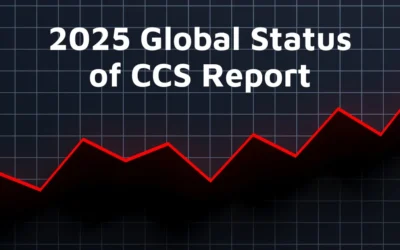From regulatory shifts to new offset technologies, carbon credit markets are undergoing a major transformation. Here’s how companies, investors, and regulators are driving the next wave of sustainable finance.
As the climate crisis intensifies, carbon credit markets are reshaping themselves in response to rising demand for more reliable, transparent, and impactful climate solutions. Once dominated by dubious “junk” credits, these markets are evolving with new regulatory standards, advanced carbon removal technologies, and an increasing focus on quality. For companies, investors, and even everyday consumers, the stakes are high. The future of these markets is set to impact corporate climate strategies and carbon credit investments globally.
Here’s a closer look at the latest trends in the carbon credit markets, including what’s driving demand and where the market is headed next.
1. Regulatory Pressures Are Defining Market Dynamics
2024 is shaping up to be a landmark year for carbon credit regulation. Driven by heightened scrutiny, markets are moving toward stricter rules that ensure only verified, high-integrity carbon credits make it to market. The EU Emissions Trading System (ETS) has led the way, expanding its scope to include the shipping industry and introducing carbon border tariffs. These tariffs, or carbon border adjustment mechanisms (CBAMs), will impose fees on imported goods with high carbon footprints. Canada, the UK, and Australia are considering similar approaches, which will likely expand the scope of these tariffs and affect global trade.
In the U.S., California’s new carbon trading reforms aim to significantly cut emissions by 2045, introducing ambitious targets and stricter caps on emissions. Meanwhile, voluntary carbon markets are also stepping up with new standards from groups like the Integrity Council for the Voluntary Carbon Market (ICVCM). The council’s goal? To tackle “junk” credits by establishing universally recognized quality benchmarks, thereby restoring market confidence and ensuring credits make real, measurable environmental impacts.
2. New Standards Are Raising the Quality Bar
In an industry where “greenwashing” accusations have made headlines, the pressure is on to separate high-quality credits from low-quality ones. Key players are introducing standards to improve transparency and traceability in the market. The ICVCM, along with guidelines from the U.S. Commodity Futures Trading Commission, are setting clear boundaries on what constitutes a valid carbon credit.
With greater standardization, companies can better assess their carbon offset purchases and avoid projects that overstate their environmental impact. This shift toward quality has also boosted demand for more effective offsets, such as biochar production or direct air capture, which provide measurable and lasting carbon sequestration compared to traditional options.
3. Technological Innovations in Carbon Removal Are on the Rise
While reforestation projects once dominated the carbon credit landscape, new technologies are leading the next wave of carbon removal solutions. Biochar, a byproduct of plant-based materials like wood and crop waste, is increasingly popular. When buried in soil, biochar stores carbon for hundreds or even thousands of years while also enhancing soil quality. Direct air capture, another high-tech solution, pulls CO₂ directly from the atmosphere, where it can then be stored underground or converted into products like concrete.
These new methods are attracting investors and companies alike because they offer verifiable, long-term carbon removal solutions with minimal risk of reversal. By contrast, traditional forest-based offsets face challenges like vulnerability to forest fires or deforestation, making biochar and other tech-driven methods increasingly attractive for sustainable investment portfolios.
4. Price Fluctuations and Rising Demand Are Shaping Investment Strategies
Carbon credit prices are climbing, with long-term projections for major cost increases. Market experts attribute these rising prices to a combination of regulatory tightening, rising demand, and a shift toward high-quality credits that deliver tangible impact. In the EU, for example, carbon prices have surged in recent years, and similar trends are expected across North America as new compliance markets emerge.
This price surge is prompting companies to seek out cost-effective, high-impact credits and adopt long-term carbon strategies. As demand for these credits continues to rise, many companies view them as an essential part of their decarbonization strategies, driving up the cost of access to verified offsets.
5. New Buyers Are Flooding the Market
Even as some traditional buyers become more selective with their purchases, new buyers—from small-to-medium enterprises to sectors with newly imposed carbon commitments—are entering the market. These new players are filling gaps left by more cautious buyers and sustaining demand for carbon credits, especially as they seek to mitigate regulatory risks and bolster their ESG profiles.
However, the entrance of new buyers also introduces a fresh challenge: ensuring that they have access to reliable, high-quality credits. Initiatives like the ICVCM are instrumental in creating guidelines that these buyers can follow to make educated, impactful purchases. The need for accessible, user-friendly market platforms for these newcomers is becoming increasingly clear, as they look for simple yet reliable ways to offset their emissions without falling into the trap of subpar credits.
The Future of Carbon Credit Markets: Toward a Trusted, High-Impact Ecosystem
Carbon credit markets are evolving rapidly, balancing growing demand with the need for high-quality, impactful solutions. The shift away from “junk” offsets marks a new era where quality, transparency, and technological advancement are paramount. As companies and investors adapt to this new landscape, they will have more opportunities than ever to make a meaningful impact.
For organizations looking to integrate carbon credits into their sustainability strategies, the focus should be on securing verifiable, high-quality credits that align with emerging standards and offer genuine environmental benefits. In a field poised for massive growth, these decisions could shape not only the future of carbon credit markets but also the trajectory of corporate climate responsibility.
As carbon credit markets evolve with new standards and innovative solutions, it’s essential for companies, investors, and consumers to stay informed and engage with credible, impactful options. At Dynamic, we’re here to help you navigate this complex landscape, offering insights and guidance on high-integrity credits, advanced carbon removal technologies, and the latest regulatory shifts. Ready to make a meaningful impact in your sustainability journey? Engage with Dynamic Carbon Credits today to learn more about building a trusted carbon strategy that aligns with your values and drives real climate action.





